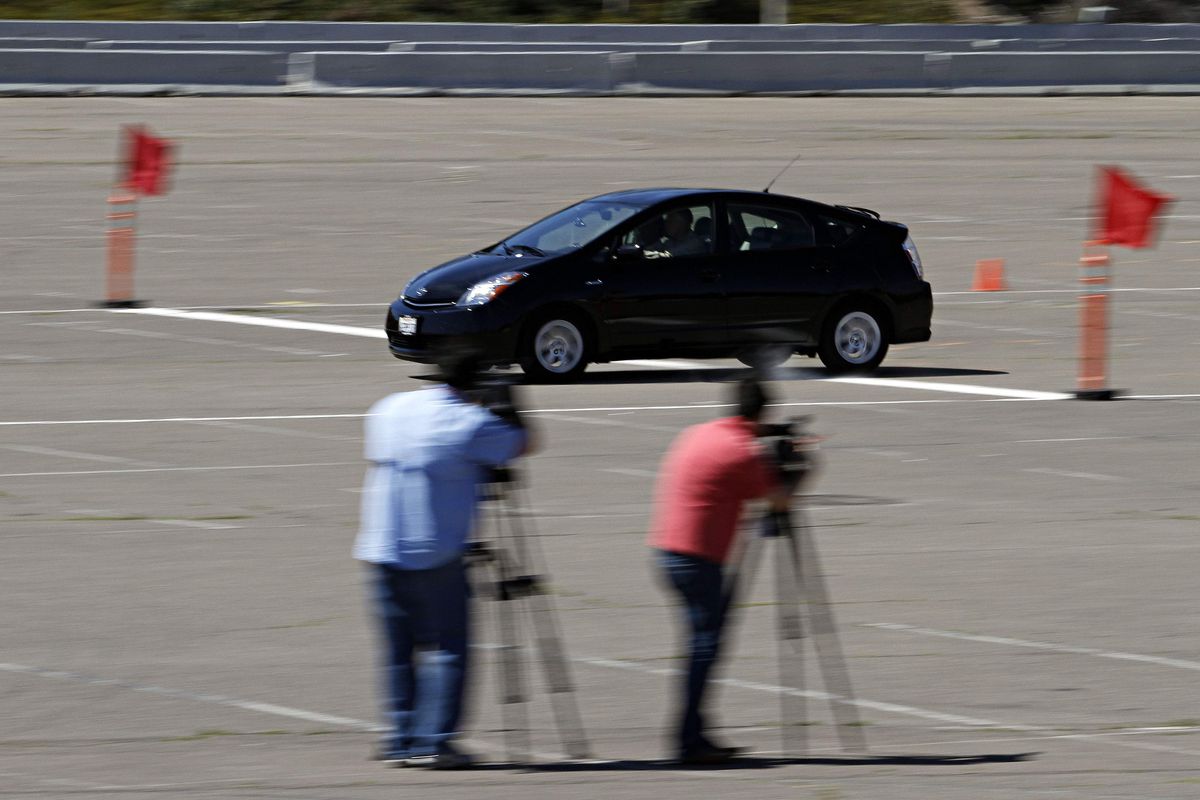Toyota dismisses runaway Prius claim
Carmaker says pedals didn’t stick, brakes were working properly

SAN DIEGO – Toyota Motor Corp. dismissed the story of a man who claimed his Prius sped out of control on the California freeway, saying Monday that its own tests found the car’s gas pedal and backup safety system were working just fine.
The automaker stopped short of saying James Sikes had staged a hoax last week but said his account did not square with a series of tests it conducted on the gas-electric hybrid.
“We have no opinion on his account, what he’s been saying, other than that the scenario is not consistent with the technical findings,” spokesman Mike Michels told a press conference.
The episode March 8 was among the highest-profile headaches Toyota has suffered in recent months. It recalled more than 8 million cars and trucks worldwide because gas pedals can become stuck in the down position or be snagged by floor mats. Dozens of Toyota drivers have reported problems even after their cars were supposedly fixed.
In Sikes’ case, Toyota said it found he rapidly pressed the gas and brakes back and forth 250 times, the maximum amount of data that the car’s self-diagnostic system can collect. That account appears to contradict Sikes’ statement – backed by the California Highway Patrol – that he was frantically slamming the brakes, at one point lifting his buttocks off the seat.
Toyota officials said they believed Sikes was hitting the pedals lightly, which would have prevented the brake-override system from kicking in.
The company had no explanation for discrepancies with Sikes’ account but confirmed the brakes were overheated and the pads worn. Bob Waltz, vice president of product, quality and service support at Toyota Motor Sales USA., said the front brakes were “metal to metal.”
Toyota said it believes a CHP officer’s account that he smelled burning brakes while guiding Sikes on the freeway.
“That is the puzzling aspect of this,” Michels said.
Sikes has said his car raced to 94 mph on a freeway near San Diego. He called 911 but did not respond to instructions from the dispatcher to shut off the engine or throw the car into neutral.
The CHP officer ultimately helped bring the car safely to a stop by telling him over a loudspeaker to hit the emergency brake and foot brake simultaneously. Sikes spoke to reporters shortly after the incident but has since kept a low profile.
Toyota said it had conducted two days of tests on the car last week. It found severe wear and damage on the front brakes from overheating, but the rear brakes and parking brake were in good condition.
And the rest of the car was fine, the automaker said – the gas pedal was not slowed by friction, the floor mat was not even touching the pedal, and a system that cuts the engine power when the gas and brakes are pressed at the same time was working.
Toyota said its tests showed the car’s electronics were working fine.
“If there were some kind of electronic problem, you would think it might actually stay permanent,” Michels said. “When your TV goes on the fritz, when electronic stuff goes on the fritz, it doesn’t just do it once and never do it again.”
A statement from Sikes’ attorney, John H. Gomez, said the firm would not comment further on the episode until a government investigation was complete. Sikes did not respond to phone messages.
The company also said the push-button power switch worked normally and shut the car off when pressed for three seconds, and that the shift lever worked normally, so the car could be shifted into neutral.
The power management computer contained no diagnostic trouble codes, and the dashboard malfunction lights were not activated, Toyota said.